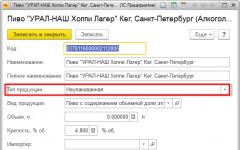Man first became acquainted with corn five thousand years ago. They began to prepare this product for the winter in the last century. A chef from France has been looking for a long time for a way that would help preserve the product for a long time. After conducting numerous experiments, he settled on conservation.
Today this product is very popular. In any supermarket you can find a jar of the preparation. It is used as an independent dish, and also prepared in salads, casseroles, pies, and soups. Let's look at how corn can be preserved at home for the winter.
The benefits and harms of canned corn
If we consider the calorie content of the finished product, it is, on average, 58 kilocalories per 100 grams of product. Depending on the manufacturer, the calorie content can be up to 100 kilocalories.
Before purchasing corn in the supermarket, you must carefully study the information about the product. The composition should include corn grains, water, salt, sugar. If there are other additives, do not buy the product.
Sweet corn removes bad cholesterol and acts as an antioxidant. The product helps to increase mental activity and improves the body's protective properties.

A large amount of fiber normalizes the activity of the stomach and intestines, as well as metabolic processes. Contains lysine and tryptophan. The high content of vitamins and microelements has been scientifically proven.
Eating corn in excessive quantities can be harmful to people who have stomach or duodenal ulcers or blood clots. During the preservation process, the product loses vitamins and microelements.

Choosing corn for canning
The corn for rolling must be chosen correctly, this will protect it from spoilage.
There are two types of corn:
- feed – used for feeding animals, does not contain a large number of vitamins;
- sugar – contains a large amount of vitamins and minerals.

Corn maturity may vary. Young milk cobs are often eaten boiled. Medium-ripe grains are more suitable for preservation.
Determining whether a product is ripe is very simple. It is enough to press the grain with your finger. If there is no pulp, but white juice is released, milk corn is ideal for consumption in boiled form.
If juice is released and there is pulp, this is an ideal option for preparing preparations. When milk is not produced, this indicates that the corn is ripe. It contains a minimum of useful substances and should not be consumed.

The preparation of the product takes place in several stages. Let's take a closer look at each of them:
- Buy or grow ears of corn in your garden.
- Carefully remove leaves and tissue. This is very important, since the remaining hairs may later end up in the salad.
- Inspect each cob and cut off areas affected by worms.
- Boil water in a container. Place the prepared cobs in it. If the corn is large, cut in half for convenience.
- After the water boils, cover loosely with a lid. Steam should come out of the pan.
- Boil for 20 minutes. Turn off the gas, cover with a lid and let stand for 10 minutes.
- Place in a colander and let the water drain.
- Proceed to cutting the grains. A sharp knife should be used at the base. Try not to destroy the integrity of the structure or crush it.
- If you plan to roll the cobs, do not cut off the grains.
- The next stage is conservation.

How to can corn at home
Processing can be carried out in different ways. The most common one is traditional recipe. Let's look at it later in the article.

Recipe for classic canned corn in grains
For preparation, a minimum amount of ingredients is required, namely:
- corn – 1 kilogram;
- sugar – 6 tablespoons;
- salt – 2 tablespoons;
- water.

Cooking method:
- Clean the cobs thoroughly.
- Cut the grains with a knife as close to the cob as possible. The pieces of cabbage that will remain during the cooking process will be on top.
- Pour water into a saucepan, add grains and bring to a boil over high heat. Next, reduce the heat and cook for one hour. If the grains are overripe, increase the cooking time.
- You can check readiness by crushing the grain in your fingers, or by taking a sample. If it is soft, turn off the heat.
- Pour the liquid into a separate container; it will be needed for the marinade.
- Pour into jars. It is best to use 500 milliliter containers.
- The container should be filled to ¾ of its volume.
- Measure out 1.5 liters of broth, add salt and sugar. Stir. Boil.
- Fill the jars to the top and sterilize.
- Cover each jar with a lid and roll up.
- Turn it upside down and cover it with a woolen blanket. In this position, the workpiece should cool completely.

Sweet and sour corn beans
You can get a pronounced taste with a slight sourness by using the following recipe.
List of ingredients:
- corn grains – 1 kilogram;
- water – 1 liter;
- salt – 50 grams;
- sugar – 50 grams.
- vinegar.

Cooking method:
- Boil the pre-cut grain in plenty of water for 8 minutes.
- To prepare the brine, boil water and add salt, stir.
- Place 1 bay leaf and 0.5 teaspoons of vinegar into half-liter jars.
- The jars should be filled 2 centimeters short of the top.
- Pour in brine.
- Sterilize in boiling water for 1 hour.
- Roll up and wrap well to keep warm.
These blanks are intended for adults. For children, it is necessary to select recipes without the use of vinegar.

Canned Corn on the Cob
Corn can be covered entirely. If it is large in size, cut the head of cabbage into several pieces.
This recipe requires the use of large containers. The ideal option is three-liter jars.
Ingredients:
- cobs;
- water – 1 liter;
- salt – 20 grams.

Preparation:
- Boil the cobs in boiling water for half an hour.
- Do not add salt to the water where corn boils.
- In another bowl, prepare the marinating liquid. To do this, add salt to boiling water and wait for it to completely dissolve.
- When the corn has cooled, distribute into jars.
- Pour in cold liquid and sterilize for more than an hour. Jars with the preparation must be placed in cold water. If the temperature in the container and the jar are not the same, the container will burst.
- Roll up and cool.
Can be used by both adults and children.

Preparation without sterilization
Salting is one of the ways that helps preserve corn for a long time.
Products:
- young cobs;
- sugar – 1 tablespoon;
- salt – 1 tablespoon;
- water – 1 liter.

Preparation:
- Carefully separate the grains using a knife.
- Add salt, sugar to the water and mix.
- Fill the containers without filling to the top.
- Pour in warm brine. Let cool at room temperature.
- Place in the cellar for 2 weeks.
- If the volume of water in the jars has decreased, add more.
Store for 6 months.

Recipe with vinegar
Products:
- corn;
- water – 1 liter;
- salt – 1 tablespoon;
- vinegar - 2 tablespoons;
- sugar – 2 tablespoons.

Preparation:
- Choose corn of medium ripeness.
- Clean and rinse.
- Cook by dipping in boiling water until the grains are soft.
- Drain the water using a colander and add cold water.
- Using a sharp knife, peel each cob.
- Using a ladle, pour into jars.
- Pour boiling water over it.
- Set the jars aside for a while and let them settle.
- Drain the liquid and boil again.
- Mix water with the remaining ingredients and bring to a boil.
- Roll up the cans.
The recipe does not require sterilization. In a similar way, you can preserve whole cobs.

Marinated with vegetables in jars
This recipe is an assortment of vegetables that is easy to prepare.
Products:
- carrot;
- zucchini;
- pepper;
- eggplant;
- corn;
- vinegar - 25 milliliters;
- sugar – 1.5 tablespoons;
- salt – 1 tablespoon.
- water – 1.5 liters.

- Pre-boil the corn kernels until soft.
- Peel, chop and mix the remaining vegetables in equal quantities.
- Distribute into containers that have been previously treated with steam.
- Fill the workpieces with brine to the very top. Sterilize.
- Seal with lids and cover with a blanket.

Sweet canned corn without sterilization
The recipe requires a minimal amount of time. Using this method, you can cook corn whole or using just the kernels.
To prepare you will need:
- cobs - 12 pieces;
- salt – 1 tablespoon;
- sugar – 3 tablespoons;
- vinegar - 2 tablespoons;
- water – 1 liter.

Preparation:
- Pre-separate the grains.
- Place in an enamel container, add boiling water and cook for 5 minutes.
- Drain the broth and soak the grain in cool water.
- Pour into jars. The distance from the grains to the top of the neck should be at least 2 centimeters.
- Pour boiling water to the top and let stand for 15 minutes.
- Drain the water, boil and repeat the procedure again.
- Next, prepare the brine by mixing and boiling all the remaining ingredients.
- Pour the water out of the jars and pour in the prepared marinade.
- Close with lids.
- Rolling according to this recipe does not require sterilization, which saves a lot of time.

Recipe with citric acid
Required Products:
- corn cobs;
- sugar – 1 tablespoon;
- salt – 0.5 teaspoon;
- citric acid – ⅓ teaspoon.
Cooking steps:
- Boil the cobs until tender. Salt the water first.
- Pour the broth into a separate container. Cool the cobs.
- Cut the grains and fill half-liter jars with them.
- Place remaining ingredients in each jar. The list of products gives the dosage for one half-liter container.
- Boil the broth and fill each jar to the top.
- Sterilize within half an hour.
- Seal and wrap tightly.

Salting or pickling the product for the winter depends on personal taste preferences. If you follow the cooking technology, the corn will turn out very tasty. In winter, it will remind you of the sun and summer days.
Ingredients:
- corn – 6 pochtakov;
- water – 1 spoon;
- salt – 1 tablespoon;
- sugar – 3 tablespoons;
- vinegar - 2 tablespoons;
- spices - bay leaf, paprika, hot pepper and so on.

Preparation:
- Cook the corn until cooked.
- Clean the grains and distribute into containers.
- Place spices in a container at the bottom.
- Prepare liquid for filling.
- Fill the jars up the neck.
- To increase shelf life, sterilize.
- Seal using the key.
The product can be consumed as an independent dish, or used to prepare salads, appetizers and soups.

How to store preserves
If during preparation all canning rules were followed, the jars are sealed hermetically, then the preparations can be stored at room temperature. It is important that there are no heat sources nearby - this will lead to the growth of microbes and spoilage of the product.
Ideal conditions for preservation are a cool, dry and dark place (cellar, basement). It is not recommended to store blanks on the balcony. IN winter time they can freeze and spoil. Salted corn is stored under a nylon lid in the refrigerator or basement. The air temperature should not exceed 5 degrees.

Corn lovers should try preparing it in salted form. For harvesting, you can use both individual grains and whole cobs. But in order to prepare whole cobs, it is worth choosing young fruits; they are easier to put in containers, and their taste will be more delicate. Here you will find how to salt young corn on the cob and kernels.

The most delicious and juicy corn is found on the cobs, and if they are still young, the vegetable has a delicate taste. It is the young fruits that can be pickled for the winter; they are conveniently placed in small containers and subsequently consumed. Pickling such fruits is very simple; all you need is salt and the fruits themselves. Let's take a closer look at how to salt corn on the cob for the winter.
Required ingredients:
- Corn cobs – 1 kilogram;
- Salt – 20 grams;
- Water – 1 liter.
Canning young ears of corn:
- The cobs should be well cleaned of leaves and panicles, large cobs can be freed from grains and only grains can be used, young fruits are harvested whole;
- When the fruits are peeled, they should be placed in hot water and cook until tender, the cooking time depends on the size and degree of ripeness of the fruit, after cooking the pulp should be soft;
- The finished pulp can be transferred to sterilized jars;
- The brine should be boiled in a separate container, it is boiled from water and the prescribed amount of salt, after boiling it is boiled for about 5 minutes, after which the solution is allowed to cool completely, it is at this time that it is worth preparing the fruits themselves;
- When the solution has cooled, you need to pour it into the prepared containers;
- To extend the shelf life, you need to cover the workpieces with lids and place them in hot water for sterilization, usually 40-60 minutes are enough;
- Then you can close the workpieces with lids and send them to a cool storage place.
Our chefs have prepared other recipes for you that will allow you to decorate your table. Marinated, or, which can be added to salads - all this will not only decorate the celebration, but will appeal to all your household members.
How to salt corn beans with sterilization

For more proper preparation The container and the contents of the twist must be properly sterilized. Only with such sterilization can you be sure that the twist will be stored for a long time, but the blanks require a long shelf life.
Required ingredients:
- Corn – 2-3 kilograms;
- Sugar – 3 teaspoons;
- Salt – 1 tablespoon;
- Water – 1 liter.
- First, you need to separate the grains from the very base, you can do this with a knife, or you can dip the cobs in boiling water for a few minutes, then immediately put them in cold water, from such manipulations the grains are easily removed from the cob;
- The grains are boiled in hot water for several minutes; hard fruits can be cooked longer so that they acquire the necessary softness;
- Now is the time to prepare the brine for pickling, it is prepared from water, sugar and salt, the mixture needs to be boiled a little;
- The finished pulp is transferred into prepared containers; their volume should be no more than 2/3 of the total volume of the jar;
- The pulp is immediately filled with hot solution and covered with sterilized lids;
- Now the workpieces are sent for sterilization in hot water or sterilized in another way;
- For greater reliability, you can send the workpieces for sterilization several times; after sterilization, the jars are allowed to cool, then sent for sterilization again. In this way, the twists can be processed 3 times; during the entire sterilization, all harmful microorganisms will be removed from the mixture and the mixture will be stored for a long time.
Canning sweet corn at home without sterilization

The workpiece is usually prepared using different ways sterilization. But there is not always time and opportunity to sterilize containers. This recipe for salting corn can be used for preparations without sterilization, so the cooking time is significantly reduced. But this will definitely not change the taste. The ingredients are designed to prepare 1 small jar of pickles; if necessary, increase the amount of ingredients.
Required ingredients:
- Corn grains - 2 cups;
- Sugar – 1 tablespoon;
- Salt – ½ teaspoon;
- Water – 1 liter.
How to can corn for the winter:
- The grains are separated from the cob, boil water separately, remove from the heat and place the pulp in it for about half an hour, it is best to steam it, for example, wrap it in a warm blanket, in this case, the grains will come away from the cob well;
- Now you need to put a measured amount of water on the fire, bring it to a boil, then you need to put the prepared grains, salt, sugar in there, this mixture should be boiled over low heat for about half an hour;
- Pickling containers are sterilized in a convenient way and turned upside down;
- After this, the grains can be transferred to sterilized glass containers and rolled up with lids, and the solution itself can be used along with the fruits; it will allow the pulp to be stored correctly and microbes will not develop. Sterilized jars can be filled simply with pulp, without using brine, only the pulp must be carefully compacted into the container, this way it will be better stored;
- Such vegetables are not too salty, which means that there is simply no need to rinse them or keep them in cold water. But if you wish, you can add a little more salt than indicated in the recipe; such pulp can be used in dishes without adding salt.
How to Can Fresh Pepper Corn

Corn can be salted with various seasonings, but the most suitable seasoning is pepper, and it can be used fresh, or you can add dried ground pepper. Dry seasoning has a more pronounced taste and aroma, so you need to add them a little. Spicy corn is quite unusual and goes well with other components of various salads.
Required ingredients:
- Corn on the cob - 6 pieces;
- Salt – 5.5 tablespoons;
- Garlic – 10 cloves;
- Hot pepper – 2 pods;
- Peppercorns – 1 teaspoon;
- Water – 2 liters.
how to salt corn for the winter:
- First you need to prepare all the ingredients, cut the corn into pieces no more than 5 centimeters thick or disassemble it into grains, removing leaves and strings;
- The garlic must be peeled, you can chop the garlic into large slices, or you can leave the whole cloves;
- Hot peppers need to be washed, cleared of seeds, cut into thin pieces or circles, if desired, you can increase or decrease the amount of hot pepper to make the mixture the desired spiciness;
- It is necessary to transfer the cooked fruits into a container for pickling, then cover it all with prepared spices;
- Now you need to prepare the brine, it is prepared from water and salt, the main thing is that the salt is completely dissolved, after which you can strain the mixture through a thick cloth so that the sediment from the salt remains on the cloth;
- The entire mixture needs to be covered with cloth or gauze, a plate of a suitable size should be placed on it, and then a weight should be placed;
- For the mixture, you need to find a dark place at room temperature and put it there, the workpiece should be salted for 4 days;
- After this time, you need to begin to control the degree of salting of the pulp, you need to taste it. If the taste is quite salty, then you can store it in a cool room, and if the pulp is not yet salted, then it is left in the room;
- You can add dry mustard powder to the mixture; this will increase the storage time of the product; mustard also gives the pulp a richer and sharper taste.
Corn pickling recipe

Salted corn is quite easy to prepare; it may take more time to separate the grains from the base itself, but this matter has its own secrets. If you first place the cobs in hot water and then quickly transfer them to ice, the grains will come off easily. The recipe does not use vinegar or other acid, so the workpiece must be sterilized for a long time, especially if it is not stored in a cool room.
Required ingredients:
- Corn cobs – 2 kilograms;
- Sugar – 1 tablespoon;
- Salt – 1 tablespoon;
- Water – 1000 milliliters.
Step-by-step cooking instructions:
- First, you can prepare the brine; to prepare it, you need to pour a measured amount of sugar and salt into the water, mix well until the crystals dissolve. Various debris may be present in the liquid; you can simply strain it through a thick cloth;
- Now you should pay attention to the cobs and separate the grains from the base. To do this, the cobs must be placed in a large saucepan, filled with water, boiled after boiling for about 50 minutes, large cobs may require more cooking time, after cooking the pulp can be removed from the boiling water and left to cool, then the grains can be carefully removed from the cob;
- Finished grains should be washed under running water, preferably using a colander;
- The corn must be transferred to pickling containers and then filled with the prepared saline solution;
- Almost finished twists need to be placed in boiling water for sterilization; they should be sterilized for 2.5-3 hours, only after that the workpiece can be stored for a long time in any room;
- After sterilization, it is necessary to roll up the jars with iron lids, wrap them upside down in a warm blanket and leave until they cool;
- Only completely cooled twists can be stored.
Corn is used in most different options, but for preparing savory dishes you can use a salty version of the preparation. It is convenient to salt this vegetable in small glass jars to make the installation process easier and appearance remained on top. Ready-made pickles can be consumed as is or added to other dishes.
Young cobs for preservation must be milky white in color.
Usually they are not very long length- 15-17 centimeters. You can take larger corn and cut the cobs into several pieces - carefully break them off or cut them with a knife so as not to damage the grains too much. We clean the cobs from leaves and hairs - they are suitable for decoction, but it is better not to use them for preservation.

Place the prepared cobs in an enamel bowl or saucepan, fill with water and bring to a boil. Cook the young cobs in this way for about five minutes.
Pour boiling water over the cobs, so they will cook faster and retain all their beneficial features. Boil the cobs until cooked - they should become soft and have no starchy taste. The prepared cobs need to be cooled - place them in a colander and fill with cold water.

After the cobs have cooled well, they need to be dried - to do this, lay them out on a towel. To make our preparations not only tasty, but also practical, disassemble the cobs by size - this way we will save the number of jars used for preservation.
I usually use liter jars - this amount is enough for one time. I also give the quantity of products based on liter jars.

To each jar add two tablespoons of table vinegar, one bay leaf and two or three peppercorns - to your taste.
Prepare canned corn on the cob in the marinade:
The marinade with which we will pour the prepared cobs is very simple to prepare. You will need two tablespoons of salt and sugar - this proportion is calculated for one liter of water. Boil the marinade for two to three minutes, after which we immediately pour the hot cobs in the jars. Take care in advance of the containers in which you will sterilize the finished jars. We sterilize each jar for at least an hour - we begin to count the time after the water boils in the pan in which the jars are standing.
Roll up the prepared jars and turn them upside down. After the jars have cooled, they can be placed in storage. Use half-liter or liter jars; such canned food is easier to prepare and will last longer. If you have a convection oven, you can sterilize the jars in it - then we count the time from the boiling of the marinade in the jars. Milk corn cobs will be the best decoration on your table.
Preparation of canned corn:
We clean the corn very well from leaves and hairs - stigmas.
Since we will be canning corn kernels, they need to be very carefully separated from the cob. To make this faster and easier, put the corn in hot water and boil for about two to three minutes.

Fill the prepared corn with cold water - it is best to use running water, so the cobs will cool faster. Carefully separate the grains and transfer to a colander.

To make quality canned corn, boil and cool a fairly large amount of water ahead of time. It will be needed for washing the grains.
Also, do not forget about the jars - they must be well washed and sterilized. We wash the peeled grains in cold boiled water, and then transfer them to boiling water.

We also blanch the corn grains for about three minutes - this time will be quite enough, do not overcook.
Prepare the filling for canned corn:
The marinade in which we will cook corn at home is very simple to make. For one liter of water, take one tablespoon of coarse salt - preferably sea salt. We also add granulated sugar - three teaspoons. Boil water with sugar and salt for about three minutes.
We transfer the prepared corn into prepared jars - do not put too many grains, it will be enough to fill the jars about 2/3. Fill the grains with hot pouring, cover the jars with lids and set to sterilize.

Corn grains contain a very large amount of protein, but practically no natural acid, so corn can only be preserved by sterilization. In this way we will protect our canned food from fungal and spore microbes.
We sterilize at a temperature of 105 degrees for three and a half hours - this time is suitable for half-liter jars. We count the time from the moment the water boils. Jars of corn kernels are sterilized in a saucepan or in an air fryer, after which they must be rolled up immediately. Don't forget to check the seals of closed jars. Store canned corn only in a cool, dark place.

Once the corn has cooled, it can be used to prepare a variety of dishes. It is imperative to sterilize jars of corn kernels if you want to get tasty and useful product, which will stand all winter, and in winter you can already prepare various salads with corn, for example, a salad from.

If you want to prepare corn kernels for use within the next two to three days, you don't need to roll them up. Then boil the grains in the sauce until tender, cool and use for salads. Store in the refrigerator for no more than three days.
Bon appetit!
Pickled corn is delicious and easy to prepare. It can be used all year round, adding grains to salads and various hot dishes, or serving as a side dish. Corn can, of course, be frozen or dried, but in canned form it will be much more juicy and interesting. Home-prepared grains and cobs are superior in properties and qualities to store-bought products, which often contain not the most healthy additives.
Pickled corn on the cob
It is advisable to marinate young milk cobs with well-formed grains sugar varieties. It will take much less time to prepare such corn than mature corn.
Without vinegar
We will need the following ingredients:
- small cobs;
- liter of water;
- 15 g salt.
We free the corn from leaves and fibers and rinse under running water. Place a pan on the stove, pour in water, lay out the heads of cabbage and, after boiling, cook them for 5-7 minutes. Using a slotted spoon, remove the corn from the water and leave on a plate to cool.
Prepare the marinade: dissolve salt in a liter of water and bring to a boil. Turn off the gas supply and remove the pan from the stove.
Place the cobs in clean, dry jars and fill to the top with marinade. Place a wide container on the fire, place a lattice liner on the bottom, pour in water and sterilize the corn in the jars for an hour. We roll up the canned food, turn it upside down and wrap it in a blanket. After the jars with the contents have cooled completely, transfer them to a cool place for storage.
With vinegar
Let's prepare the products:
- several young heads of corn (per 1 liter jar);
- a tablespoon of sugar;
- half a tablespoon of salt;
- 2 tablespoons vinegar.
In this cooking method, there is no need to pre-boil the cobs. We free them from leaves and fibers, rinse them thoroughly under running water and place them in a jar, top to top. Pour salt, pour in specified quantity vinegar, add sugar and fill everything to the top with cold water.
We sterilize the corn in a wide container for an hour, after which we immediately seal it, cool it at room temperature under a blanket and store it in a cellar or basement.
On a note! The vinegar gives the corn pickled in this recipe a nice, slightly spicy taste!
Spicy
We will need:
- 550 g corn;
- a teaspoon of vinegar;
- a tablespoon of salt;
- a pair of bay leaves;
- one and a half liters of water.
We free the heads from the leaves, remove the fibers and wash the corn under running water. Place in a saucepan and cook over medium heat for a quarter of an hour. Remove from water and cool on a plate.
In the meantime, we are preparing the marinade: dissolve the salt in the specified amount of water and bring to a boil.
Place bay leaves at the bottom of a sterilized 3-liter jar, add vinegar and corn cobs. Fill everything with boiling salted water, cover with lids and send for sterilization. After 40 minutes, remove the jars from the boiling water and immediately roll them up.
With greens
Products that need to be prepared:
- young cobs;
- fresh parsley;
- fresh dill;
- currant leaves;
- 3 tablespoons vinegar;
- a tablespoon of salt;
- a couple of tablespoons of sugar.
We wash the peeled corn and cut it into small pieces - washers. Place them in a saucepan and boil for 30 minutes.
Important! We do not drain the water in which the corn was boiled - we will need it when preparing the marinade!
At the bottom of the sterilized jars we place one sprig of fresh herbs and one currant leaf, and chopped corn on top. We pack everything very tightly.
We make the marinade: add the specified amount of salt and sugar to one and a half liters of water in which the cobs were boiled, bring to a boil, then pour in the vinegar and immediately remove from the stove. Pour the hot marinade over the corn in the jars, cover with lids and sterilize everything for 40 minutes at a low boil.
On a note! This time is designed to sterilize half-liter jars; if their volume is larger, then the time should be increased - liter jars about an hour, one and a half liter jars about 1 hour 20 minutes.
Upon completion of sterilization, roll up the jars, turn them upside down and let cool at room temperature. Store in a cool place.
Pickled corn kernels
Pickled corn kernels are good because they are a more convenient ingredient for later use. They no longer need to be separated from the head of cabbage - just open the jar and add the product to the dish.
Sweet grains
- 700 g corn grains;
- liter of water;
- a couple of tablespoons of sugar;
- a tablespoon of salt.
Using a sharp knife, cut the grains from the cobs, place them in a colander and boil in boiling water for five minutes.
Make the marinade: bring water to a boil (you can use the same water you blanched the grains in) and add sugar and salt to it.
We sterilize half-liter jars over steam, let them dry and fill ¾ of the volume with grains. Pour in hot marinade, not reaching the top edge by about a centimeter. Cover with lids and sterilize in boiling water with minimal gas supply for 2-3 hours. Roll up the canned food and let it cool, turning the necks down.
Grains with vegetables
Pickled corn kernels with vegetables are a ready-made dressing for soups and other dishes, which will definitely come in handy in winter. To prepare it you will need:
- 800 g of grains;
- small zucchini;
- a couple of bell peppers;
- two carrot roots;
- 5 peas of allspice;
- a tablespoon of salt;
- 4 tablespoons vinegar.
Remove the grains from the cobs and boil them in water for 20 minutes. Pour them into a bowl. Peel the carrots and cut into small cubes. bell pepper and rinse the zucchini under running water and also chop into small cubes. Mix the prepared ingredients with corn kernels and fill them into stylized jars. Add a couple of allspice peas.
Prepare the marinade: pour one and a half liters of water into a saucepan, add salt and sugar, bring to a boil, then add vinegar and immediately remove from the stove. Pour the hot marinade over the vegetable mixture and cover with lids.
Sterilize for 1-2 hours and immediately seal for the winter.
- If the corn that you are going to pickle turns out to be overripe, then you need to boil it a little longer. The cooking time indicated in the recipe should be doubled or even tripled, depending on the degree of softness of the product.
- It will be much easier to separate the grains from the cobs if you first hold them in boiling water for a couple of minutes and then rinse them with cold water.
- To ensure that the preserved food does not explode, it must be sterilized 2-3 times and only then sealed for storage.
- It is advisable to choose a cool, dark place to store pickled corn. If you plan to keep the jars in the apartment, then try to place them where sunlight does not reach, for example, in the pantry or in the lower cabinet of the kitchen unit.
All materials on the website are presented for informational purposes only. Before using any product, consultation with a doctor is MANDATORY!
Chief Editor









